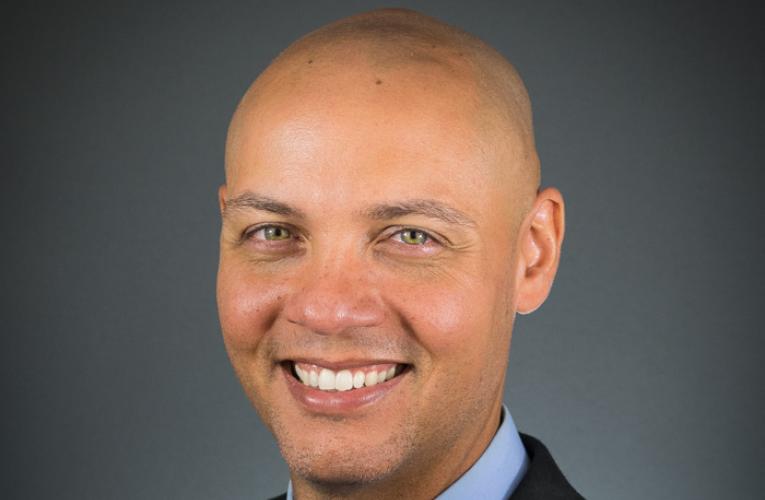To commemorate Indigenous Peoples' Day, we asked water scholar Ryan Emanuel T'99, a member of the Lumbee Tribe of North Carolina, about his research, why it's important to highlight Indigenous perspectives in the environmental field and more. Emanuel will join the Nicholas School faculty as associate professor of hydrology in January.
Can you give a brief introduction about yourself?
Emanuel: I’m a hydrologist and a professor. I study the movement and status of water in the environment, and I also study policies that affect the way we think about water and watery places like wetlands, streams, and estuaries. I’m also a member of the Lumbee Tribe. I grew up in a Lumbee family with close ties to our ancestral lands in southeastern North Carolina.
What are the main areas of focus in your research and how does your research connect to Indigenous rights and environmental justice?
Emanuel: I spend much of my time studying various ways that plants, soils, and the atmosphere influence the movement of water through watersheds in the Southeast and Mountain West. Through the years, that work has touched on issues of climate change, water pollution, natural disasters and more. Several years ago, I began working more closely with tribal communities in North Carolina. We quickly realized that many of the issues facing these communities stem from the ability (or inability) of tribes to participate in environmental decision-making. My work turned toward studying the historical and policy-related reasons behind these circumstances here in North Carolina and elsewhere. I am also interested in collaborative work to help Indigenous peoples identify future threats to particular rivers, landscapes, and other culturally-important places.
Why is it important to highlight Indigenous perspectives in the field of environmental science?
Emanuel: Indigenous peoples have spent centuries or in some cases millennia studying, stewarding and thriving in their lands. In many cases, they are the original practitioners of environmental science, and have a deep understanding of sustainability, climate change, agriculture and other topics. Even so, their knowledge systems were long dismissed as primitive or backwards by settlers and colonizers. In California, for example, Indigenous groups carefully managed landscapes using controlled fires. This practice promoted beneficial plants, attracted wildlife, and prevented large, catastrophic fires by preventing the build-up of flammable fuel on the landscape. But settler governments, after seizing lands from Indigenous peoples, spent more than a century suppressing wildfires. The tragic fire seasons that California has experienced in recent years stem from climate change, but they also come from the legacy of ignoring Indigenous peoples’ knowledge about how best to tend the land.
What does Indigenous Peoples’ Day mean to you?
Emanuel: I grew up in a time and place where European explorers, settlers, and colonizers were venerated and mythologized. This was especially true around certain holidays like Columbus Day and Thanksgiving. At the same time these holidays elevated colonial heroes, they tended to mythologize and stereotype Indigenous people in negative and hurtful ways. When I see Indigenous Peoples’ Day acknowledged and celebrated widely, I am filled with hope at the idea that we can not only break down harmful stereotypes but also replace them with accurate representations of Indigenous peoples who still thrive in the US and around the world. I am also impressed by young people—high school and college students—who have led the charge to recognize Indigenous Peoples’ Day on their campuses. These are important accomplishments.
How do you plan to continue your work on Indigenous rights as they relate to the environment in your position at the Nicholas School?
Emanuel: I hope to complete a book on environmental justice and Indigenous rights in eastern North Carolina in the near future. Once that is finished, I plan to develop some emerging work around cultural knowledges and practices related to water in the Coastal Plain. I also plan to continue work related to the disparate impacts of fossil fuel infrastructure on marginalized communities. I look forward to involving Duke students and early career scientists in all of this work, and I hope to learn from ideas that they bring to the table.
Why do you think it is important for Duke and SIMILAR institutions to have Indigenous faculty members?
Emanuel: Institutions - whether they are universities, governments, corporations, etc. - benefit from diverse perspectives and diverse ways of experiencing the world. Particularly in academia, students benefit from diverse faculty perspectives. Representation also matters, especially for students who come from marginalized backgrounds. Duke is situated in a state with a very large Indigenous population, and it recruits from tribal nations and Indigenous communities elsewhere. There is a strong tradition of allyship and advocacy for Indigenous students among the faculty at Duke, but it is also important for Indigenous students to see themselves represented among their faculty.

